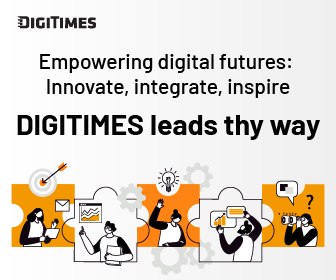Taiwan is expected to transition into a super-aged society in 2025, when those aged 65 and older would constitute over 20% of the overall population, coinciding with an increase in cardiovascular disease prevalence. For cardiovascular patients, post-discharge risk management has consistently been an oversight in medical care. Despite the condition being stable and the patient being discharged, home emergency care may still be required owing to abrupt occurrences such as arrhythmias, cardiac arrest, or falls. Family members or caregivers frequently lack knowledge of the disease, which results in delays in the golden rescue time, in addition to geriatric individuals living alone.
Far Eastern Memorial Hospital (FEMH) has implemented measures to address those issues, including the establishment of a 24-hour immediate care and rescue ecosystem outside the hospital, the development of innovative wearable devices, and the establishment of a Safe Medical Care Platform. The objective is to extend medical care to patients' homes.
Three entities work together to create a novel framework for immediate emergency care
FEMH's immediate care and rescue ecosystem consists of three fundamental elements: "Smart wearable devices, a remote health management platform, and a fire rescue system." The patient's condition can be evaluated via real-time data transmitted by wearable devices and mobile applications. In the event that an irregular cardiac rhythm is detected, the system will promptly notify the case manager and activate the New Taipei City Fire Department 119 system to initiate the ambulance response protocol. This three-party integrated innovation disrupts the framework of the traditional hospital-based medical care system, seamlessly extends cardiovascular care to the home environment, and realizes a new medical model of "out-of-hospital instant emergency network".
Smartwatches, characterized by high accuracy, immediacy, and system integration, possess the potential to function as front-line monitors during the operation of this mechanism. The data can be transmitted to the remote platform in real time through the mobile phone without the patient's active involvement by continuously monitoring the heart rhythm for 24 hours. Emergency rescue personnel can swiftly identify and access the patient's location for assistance by employing the integrated GPS to deliver accurate location data during emergencies.
The preliminary research initiative by FEMH educates patients on the use of smartwatches before their hospital discharge and provides monitoring following their return home. The watch can independently detect variations in heart rate through a mobile application without apparent symptoms. Upon identifying substantial anomalies, the mobile application system automatically activates the notification protocol, enabling a secondary response of "detection-return-response-rescue activation." The complete procedure, from the identification of abnormalities to the alerting of the New Taipei Fire Department, averages only 21 seconds, thus minimizing delays in emergency care. Especially when the patient is unconscious or unable to seek help independently, the system is expected to autonomously secure vital rescue time.
Empirical findings confirm the benefits while expanding the scope of care
Yen-Wen Wu, Director, Department of Medical Research, Far Eastern Memorial Hospital, revealed that the pioneering project endorsed by the hospital effectively performed heart rate monitoring tests on more than 100 subjects, achieving a 100% success rate for data transmissions from the wearable device to the platform. Furthermore, the physiological detection values adhered to the reference standards for clinical decision-making, confirming the system's reliable performance in a practical environment.
FEMH has inaugurated the "FEMH Peace of Mind Care Center," thereby broadening its service offerings to include remote monitoring of implantable cardiac devices and continuous electrocardiogram surveillance. In the future, it is anticipated that the care objects will extend from high-risk cardiovascular patients to sub-healthy populations with a familial predisposition.
Wu further stated that this innovative model entails the development of various wearable devices designed to deliver precise sensing data and real-time alerts. ASUS will collaborate with FEMH to develop an "out-of-hospital real-time detection and emergency rescue" system aimed at transforming Taiwan's medical framework, ensuring that patients receive continuous protection at home, akin to hospitalization, thereby providing reassurance to both patients and physicians.

Far Eastern Memorial Hospital and ASUS have teamed with the New Taipei City Fire Department to develop an off-site quick rescue system using the wearable device and an instant notification platform. When irregularities in patients are detected, the 119 attendance system can be automatically activated, saving valuable rescue time.

In the event that a patient wearing the smart watch detects an abnormal heart rhythm upon returning home, the device can automatically transmit the information back to the platform and immediately activate the fire department's rescue mechanism, thereby establishing a new remote medical model with 24/7 protection.



